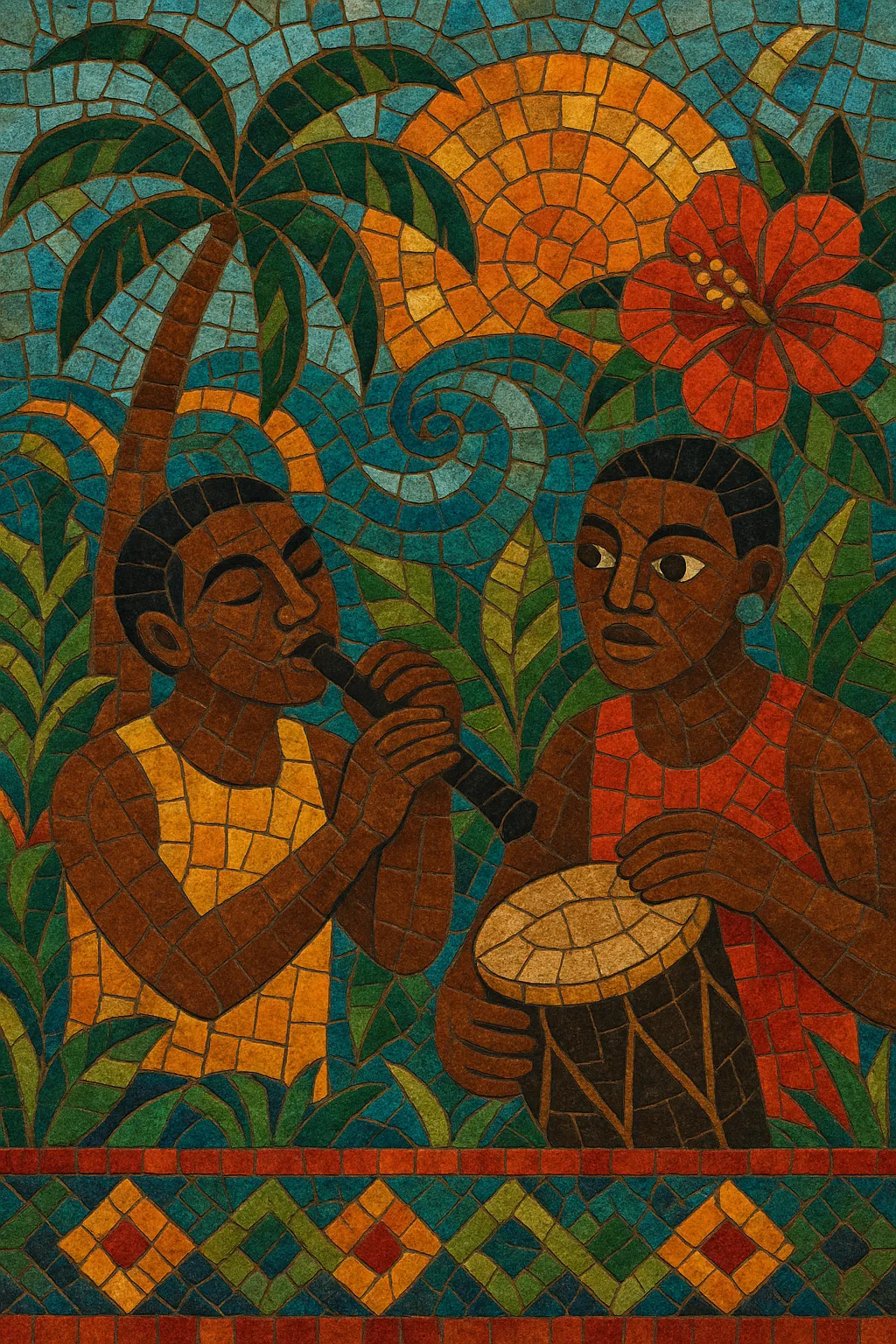Tropicanibalismo is a contemporary Brazilian club-music current that applies the historic idea of cultural "cannibalism" (antropofagia) and the Tropicalismo ethos to a digital age of sampling and hybridism. Producers and DJs splice regional Brazilian pop and street styles with global bass frameworks, creating irreverent, highly rhythmic tracks aimed at the dancefloor.
Sonically, it collages elements from funk carioca, tecnobrega, brega funk, pagodão, axé, forró, and mangue beat with modern electronic tools and plunderphonic tactics. The results range from neon-bright party anthems to gritty, overdriven edits that celebrate and recontextualize Brazilian vernacular music.
Tropicanibalismo draws on Brazil’s long-standing notion of cultural "cannibalism"—absorbing and transforming external influences—and the late-1960s Tropicália movement’s irreverent mix of high/low culture. As internet access, DJ culture, and DAW-based production widened in the 2010s, young Brazilian artists applied these ideas to club music, freely sampling, editing, and fusing local styles with global electronic trends.
Throughout the 2010s, parties, netlabels, and online communities helped consolidate a sound that stitched together funk carioca’s tamborzão grooves, tecnobrega’s synthetic melodrama, brega funk’s swing, and the exuberance of axé and pagodão, all filtered through contemporary bass music and plunderphonics. Scenes in Belém (Pará), Recife, Rio de Janeiro, and São Paulo became hubs for this hybrid, with DJs and producers trading edits and bootlegs that moved from local sound systems to global club circuits.
Rather than a rigid genre, tropicanibalismo works like an umbrella aesthetic: anything can be "eaten" and remixed. Artists embrace kitsch, FM-synth sheen, crowd shouts, soap-opera and TV samples, and heavy autotune—juxtaposing nostalgia with forward-looking sound design. Its open, celebratory approach continues to influence how Brazilian club communities reframe regional music for contemporary dancefloors.


